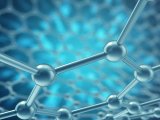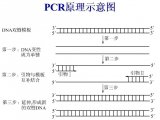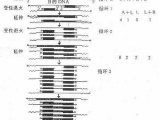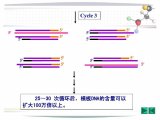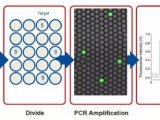George Church Lab, Harvard Medical School
PCR_protocol.html">http://twod.med.harvard.edu/labgc/estep/longPCR_protocol.html
Efficient Long PCR results from the use of two polymerases: a non-proofreading polymerase is the main polymerase in the reaction, and a proofreading polymerase (3' to 5' exo) is present at a lower concentration. Following the results of Cheng et al. PCR_protocol.html#Cheng">(1) we have had success using Tth (ABI/Perkin-Elmer) as the main-component polymerase and Vent (New England Biolabs) as the fractional-component polymerase. Other combinations of proofreading and non-proofreading polymerases have been used successfully for many applications. The buffer listed below works well with Tth and Vent, but not with others. If you are interested in using other polymerases make sure that you use compatible buffers. Error rates for other polymerases can be found at http://research.nwfsc.noaa.gov/protocols/taq-errors.html
50 microliter reaction same as above except for the following change: 0.1 U Vent per rxn. This Vent concentration has not been completely optimized and more Vent might be better, but this concentration works well.
Others have informed us that conditions similar to those above work well.
In our hands tricine buffer works well with Tth but not as well with Taq. The pH is probably critical to the efficiency of amplification of long targets PCR_protocol.html#Cheng">(1).
85 mM KOAc
25 mM Tricine pH 8.7 (adjust pH of Tricine stock solution with KOH)
8% glycerol
1% DMSO (1 to 4% works)
1.1-1.3 mM Mg(OAc)2
A 5X buffer stock containing 6 mM Mg(OAc)2 (1.2 mM final concentration) and 5% DMSO (1% final concentration) can easily be made using 500 mM Mg(OAc)2, 1 M Tricine and 1 M KOAc stock solutions as follows:
425 mM KOAc
125 mM Tricine pH 8.7 (adjust pH of Tricine stock solution with KOH)
40% glycerol
5% DMSO
1.2 mM Mg(OAc)2
4.25 ml 1M KOAc
1.25 ml 1M Tricine, pH8.7 @ 25 degrees C (with KOH)
4.00 ml glycerol
0.50 ml DMSO
120 ul 500 mM Mg(OAc)2
Generally, we have been using two temperature cycles with one annealing/extension step @ 68 degrees C and a short melting step @ 94 degrees C.Presently, a rough formula for calculating annealing/extension times is 1 min (2.5 sec/100 bases) = n. The constant one minute is probably necessary for primer annealing/extension to occur; at 68 degrees C the kinetics of primer-template annealing and melting may become the limiting factor in the rate of primer extension.
Initial melting 94 degrees C 10-15 sec
Cycles 1-15 94 degrees C 10 sec, 68 degrees C for n min (15 times)
Cycles 16-30 94 degrees C 10 sec, 68 degrees C for n min 15 sec/cycle (15 times)
The 15 sec cycle extension for cycles 16-30 may be necessary for only the longest PCR (20 kb), please experiment.
I use a hot start method for all of my L-PCR. I split the reaction into two parts: a template/primer fraction which is 3/4 or 4/5 of the reaction volume, and a polymerase fraction which constitutes the remaining 1/4 or 1/5 of the reaction. Each fraction is 1X for buffer concentration. The polymerase fraction contains only polymerase, buffer and water; all other components are included in the template/primer fraction. I put the template/primer fraction in the tube and heat in the PCR machine to 94 degrees C for 10 sec. to denature. I then add the polymerase fraction during the first annealing/extension step. Alternatively, after denaturing, an 80 degree step can be used for adding the polymerase fraction(P.E.).
We have had success using the following guidelines for primers (these are not inviolable rules, they are simply guidelines):
Primers are 20 to 23 bases in length
G C = 12 bases
A T = 8 to 11 bases
Ideal Tm = 60 to 68 degrees C in 85 mM salt. These values were calculated using the PrimerSelect program of DNAStar. A working primer might have a Tm significantly lower than 60 degrees C and we have used successfully primers with Tm values below 50 degrees C, but avoid this if possible-especially if you are doing genomic DNA templated reactions. We have successfully used the positive control primers from the PCR-XL kit available from Perkin-Elmer, and these primers both have Tm values of about 60 degrees C using PrimerSelect from DNAStar. Other programs probably give similar results.
Avoid primer hairpins.
Avoid primers with 3' complementarity (results in primer-dimers). These last two problems can be avoided with the aid of a primer-picking program like PrimerSelect or Oligo.
1.
DNA. Proc. Natl. Acad. Sci. 91, 5695-5699 (1994).
2U to 5U Tth
0.02 U Vent
0.2 mM each dNTP
20-40 pmoles each primer (400-800 nM)
1.1-1.3 mM Mg(OAc)2
10^5 -10^7 template molecules






